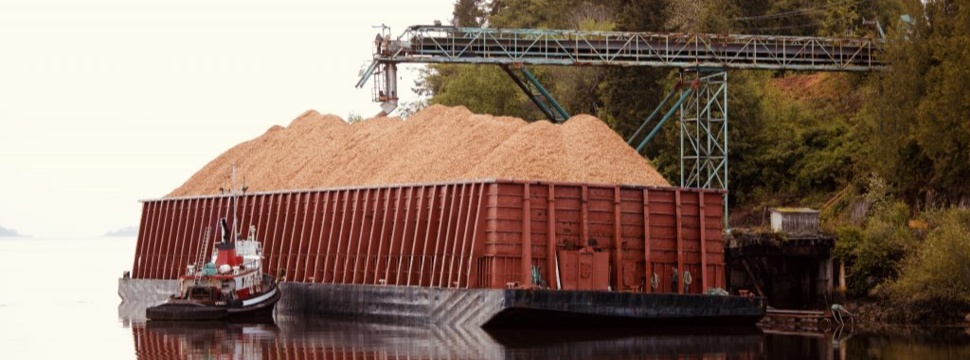Paper Excellence: First barge of logging waste chips successfully loaded in new First Nations partnership
News General news
Paper Excellence is pleased to announce the first barge has been successfully loaded with chips produced by Atli Chip Limited Partnership which is a new First Nations partnership for the Company.

The Atli Chip Limited Partnership, situated in Beaver Cove, is majority owned by Atli Resources LP with minority stakes owned by Paper Excellence and Wahkash Contracting Ltd. Atli Resources LP is the forestry arm of the ‘Namgis First Nation. Wahkash Contracting Ltd. is a stump-to-dump logging contractor specializing in remote logging in coastal BC.
“As part of this partnership, Paper Excellence also entered into a chipping services agreement to receive all the chip and hog production from the facility,” said Paper Excellence’s Chief Forester, Quinton Hayward, RPF. “This first barge of chips will be consumed by one of our four coastal mills located in Powell River, Port Mellon, Crofton and Port Alberni. It is an exciting milestone in this partnership.”
“We’ve been working hard at the chip plant since this partnership was announced last month and the team is really excited to have achieved this milestone,” said Warren Roberts, General Manager, Atli Chip Limited Partnership. The chip plant employs 7 to 10 people who live in Beaver Cove and the surrounding north Island communities.
“We are very excited to have such strong partners in this new business and that includes the employees working at the chipping facility,” said Doug Mosher, RPF, CEO of Atli Chip LP. “Over the past few weeks, the contributions and efforts of everyone has been outstanding. Our goal now is to increase the utilisation and volumes of wood waste and pulp logs to grow the chip plant business for the benefit of the ‘Namgis First Nation and the surrounding communities.”
“This is also an important milestone for Paper Excellence from a fibre supply perspective,” explains Hayward, “These chips were made from logging waste— including treetops, broken logs and chunks—produced by local logging operations and dryland sorts. Turning this material into chips is reducing the amount of usable fibre left behind after primary forest harvesting to ensure better utilization of the forest resources and carbon reduction.”










